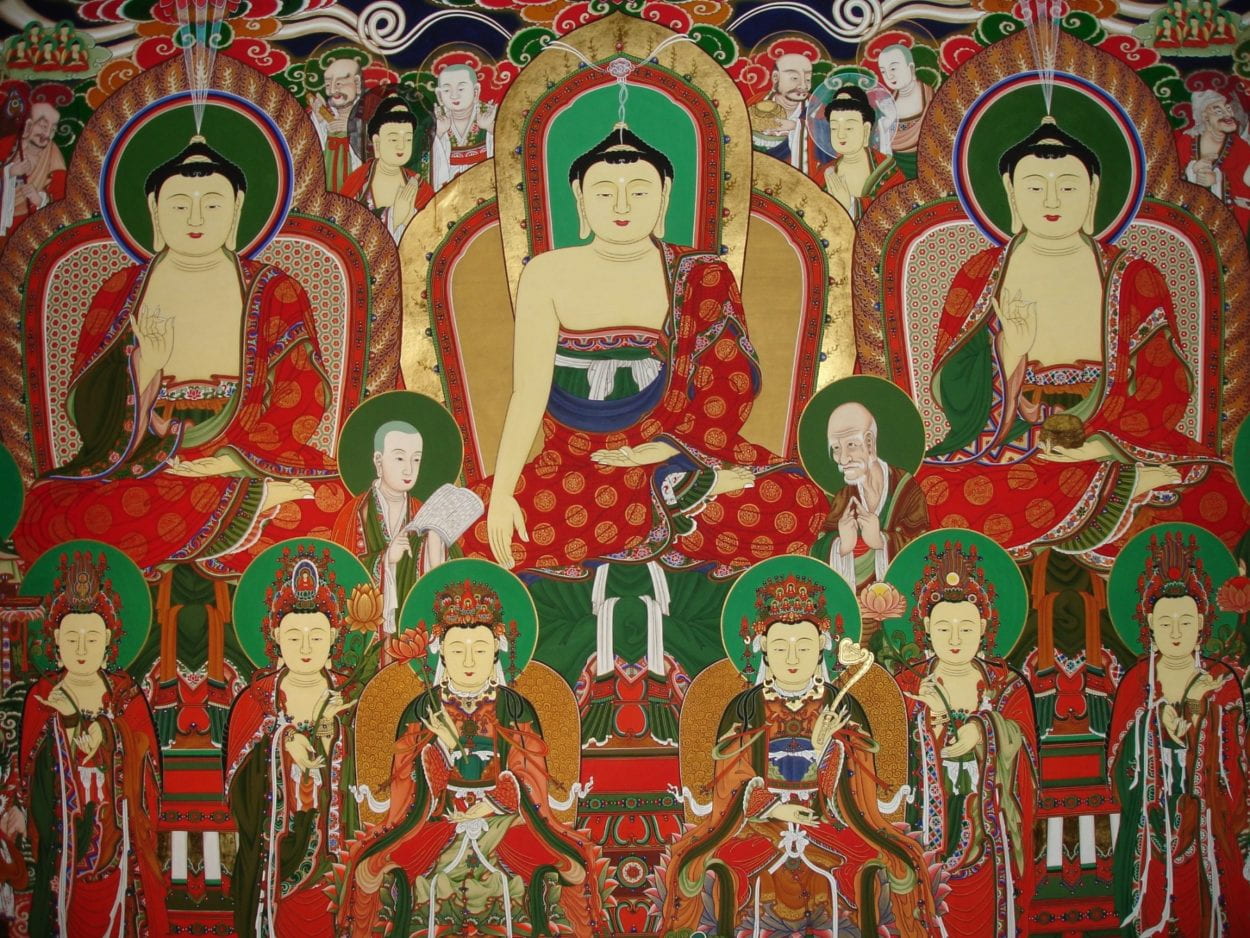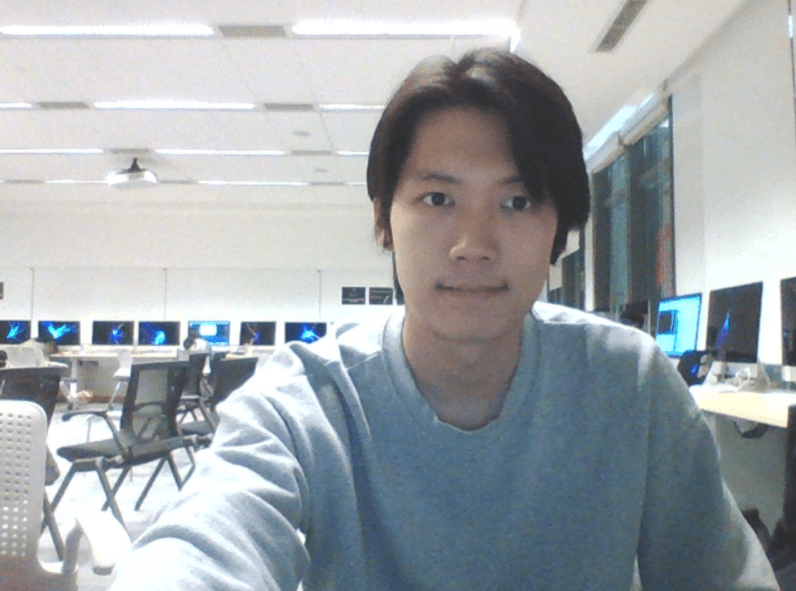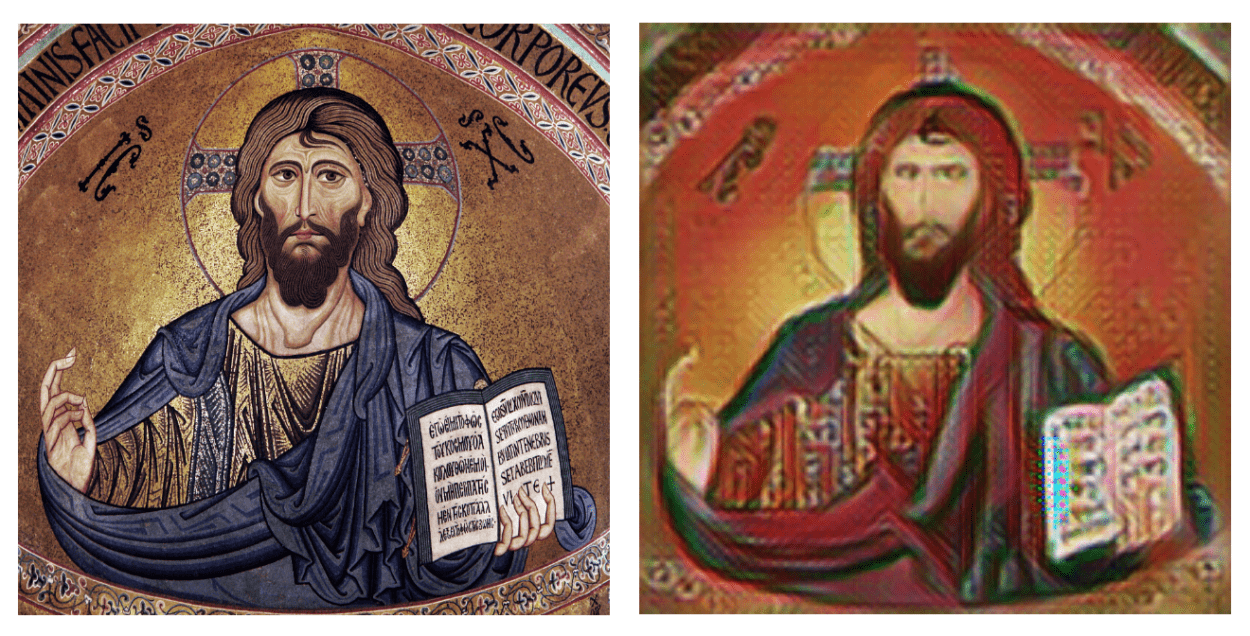For this week’s assignment, I chose “Taenghwa” as the style input. Taenghwa, paintings of Korean Buddhism that are mostly for indoor display of temples, is characterized by its rich symbols and intense colors. Below is the image I used:

Using Intel DevCloud, The entire training process took roughly 20 hours. Since I tried several times but eventually failed to utilize DevCloud for my midterm project, I could correctly learn this time how to submit my shell file and export trained data. After the training process was completed, it generated a folder with a json file and a number of files that are labelled “variable_#.” I integrated this data-set with Aven’s Inference Style Transfer model.


Despite running slowly, it stylized my webcam input in real time. We can clearly see how the color scheme got changed into red and green, which are main colors of the Taenghwa. Most lines seem, as expected, somewhat vague and lumpy. And yet, I was excited to spot some characteristics of Taenghwa from the output. So I tried it with other images, using Aven’s another code: Style Transfer for Images.

First image I tried was The Birth of Venus by Sandro Botticelli. Its output seems rather surreal than giving the impression of Taenghwa. Another remarkable thing I found is that most of the stylized images have glitched parts. As you can see from the image above, the clam shell and Venus’ leg are partially glitched like rgb subpixels of an analog TV screen. They can also be found on the image in which I have my hands together; the curtain behind me also has a glitchy part. I’m wondering what caused this effect because the original Taenghwa input doesn’t have this sort of characteristics.

The other image I tried was the 12th century mosaic of Christ Pantocrator. Since it has clear distinctions between the figure and the background, the generated image seems clearer than the past results. And this image definitely displays more characteristics of Taenghwa, considering its composition and solemn atmosphere.
Overall, the whole process went smoothly and I could learn a lot from training the algorithm with the data I chose. I’m excited to learn more about the GANs in upcoming weeks, so I can realize the Hanafuda GAN for my final project.